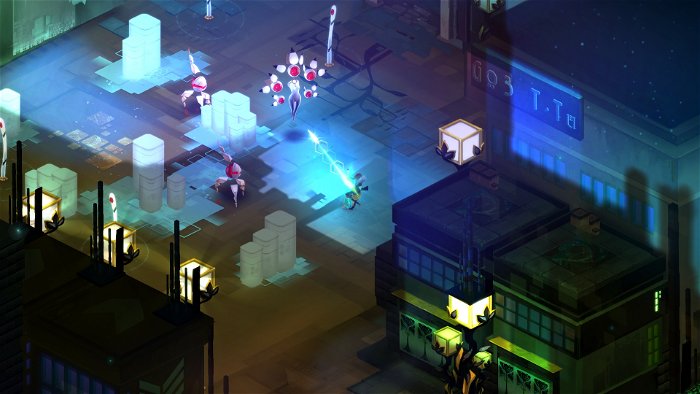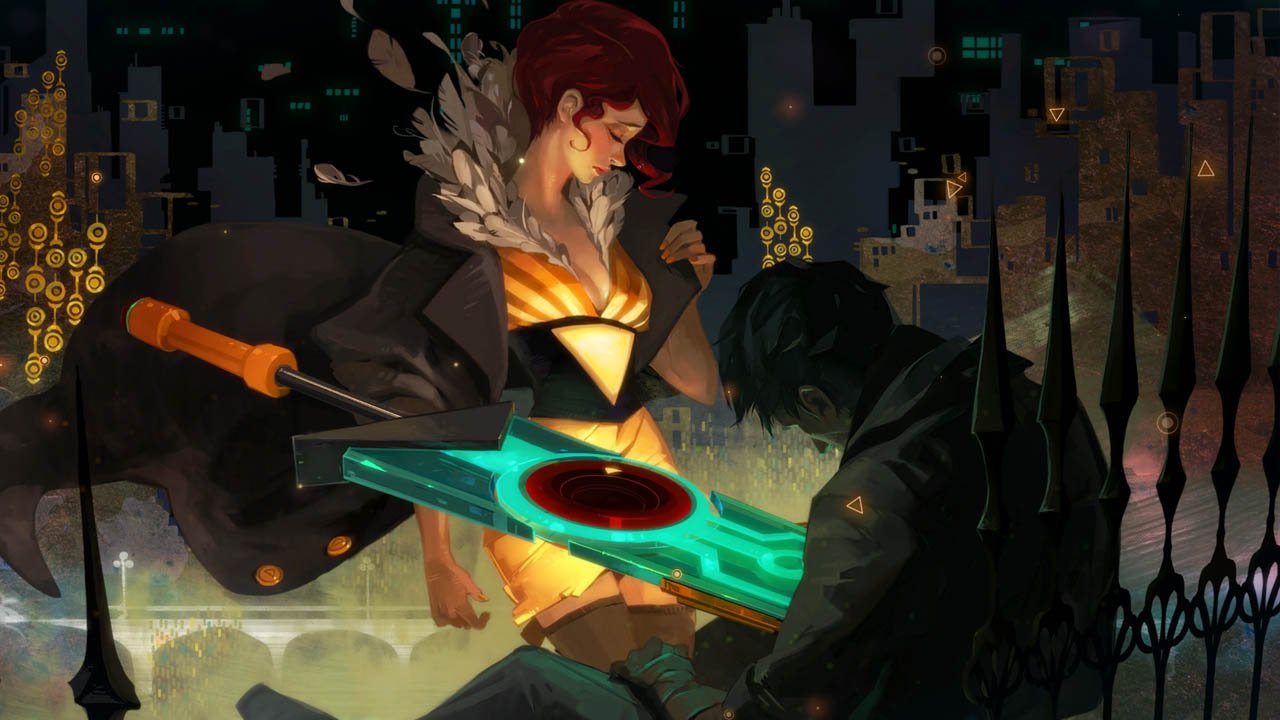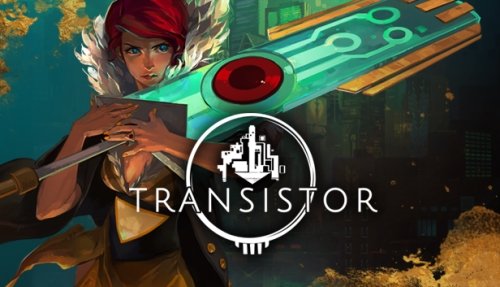Transistor isn’t interested in definitions. It isn’t especially concerned with explaining itself or offering an easy way into its complex world, either. From the mysteries of its strange science fiction world down to the details of its multifaceted gameplay systems, Transistor is a game confident in its player’s willingness to learn for themselves—to be curious enough about what’s going on that s/he will forge on through uncertainty to come to grips with a unique experience. This unwillingness to be simple is its greatest strength.

The game opens with Red, a famous singer from the futuristic Cloudbank city, picking up a talking sword. After recovering from a failed assassination attempt, this sword—the Transistor—not only helps Red figure out exactly what is going on in Cloudbank, but to fight off the techno-plague that is constantly attacking her. The player is thrown into Transistor without much of anything by way of explanation. Red’s position in the world, her relationship with the numerous characters she immediately unlocks databases for, and the nature of the Transistor itself are all incredibly confusing during the offset of the story. Luckily, each of Red’s encounters with the Process—the aforementioned enemies taking over Cloudbank—leads her deeper into the story, revealing new information that slowly pieces together the background of Transistor’s world. As the player ventures further and further into the city, the previously baffling setting begins to make sense. The plot unfolds organically, uncovering the stakes at hand bit by bit until everything fits together to create a rich narrative concerned with corrupt bureaucracies, class conflict, and, finally, love. It’s a neat trick that developer Supergiant Games handles with aplomb. Lesser writers and gameplay designers could easily have fumbled the delicate process of bringing players into such an alien plot, either revealing too much or too little as the story progresses.

Learning how to play Transistor is a similar process of incremental discovery. At first, the combat seems unnecessarily complex. Red unlocks new Transistor moves at a furious pace, and figuring out exactly what each of them does (or how to employ them tactically) can be overwhelming. The sword can be kitted out with new modules that can either provide the player with new active abilities (mapped to one of the controller buttons) or be slotted into existing moves in order to strengthen or augment their effects. Picking up a slash attack, for example, can allow Red to tear through a group of enemies in a single line or be assigned to another move to boost the damage it inflicts on enemies. Initially, the number of choices available to the player comes off as overwhelming. Over a fairly short period of time, though, the many abilities become more manageable and the initial confusion gives way to an understanding of the enormous array of possibilities presented by the combat system. Once players have wrapped their heads around what Red and the Transistor are capable of, the game’s combat scenarios become sandboxes that reward experimentation and varying approaches to battle. Each encounter with the enemy Process is an opportunity to find the best combinations of abilities for a given purpose or to refine the set-up of a customized move-set.

The myriad combat mechanics available to the player remain consistently enjoyable throughout the entire game thanks to their unique implementation. Transistor blends real-time and turn-based battle systems, allowing for careful planning during tough fights and quick resolutions of easier ones. A single button press freezes the screen, allowing Red to queue up abilities until her allotment of moves is used up, lending a tactical aspect to what would otherwise be fairly straightforward action-based combat. While all of the gameplay systems ultimately work well together, the user interface is difficult to make sense of, especially during the game’s bewildering introduction. Transistor is heavy on style, and the decision to employ bits of pseudo-programming code in its text (expect plenty of superfluous closed brackets and numbers) obscures menus that are easy enough to use with experience.






